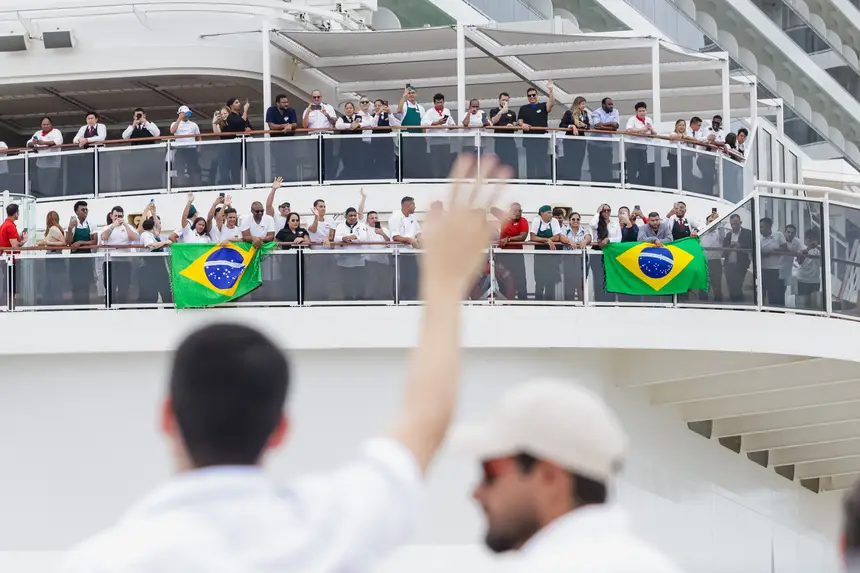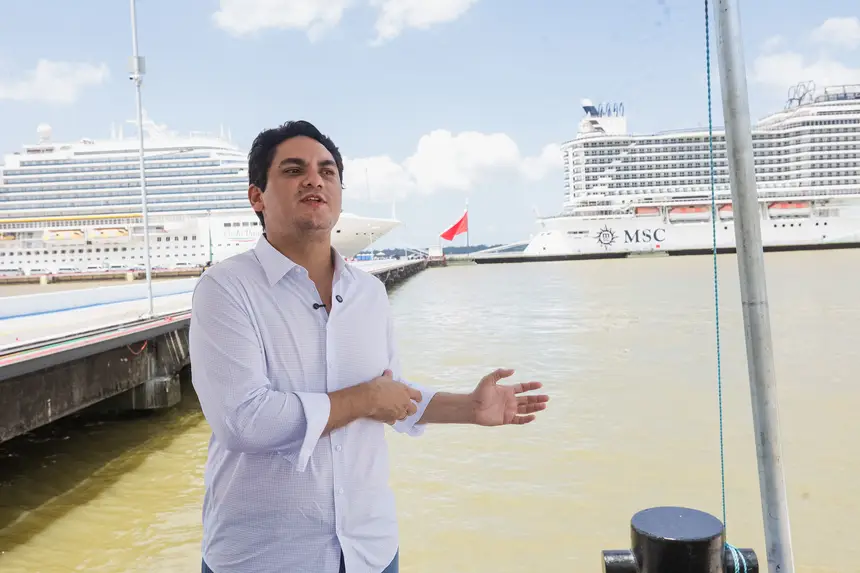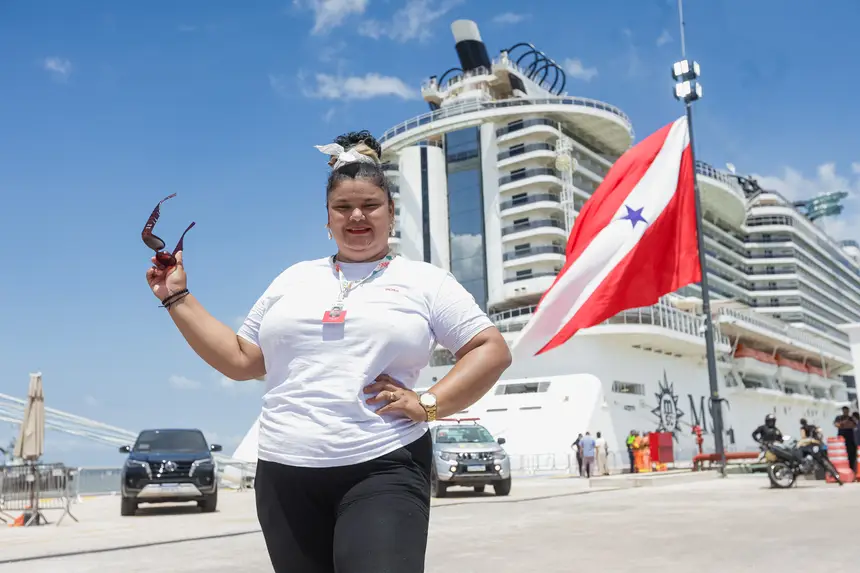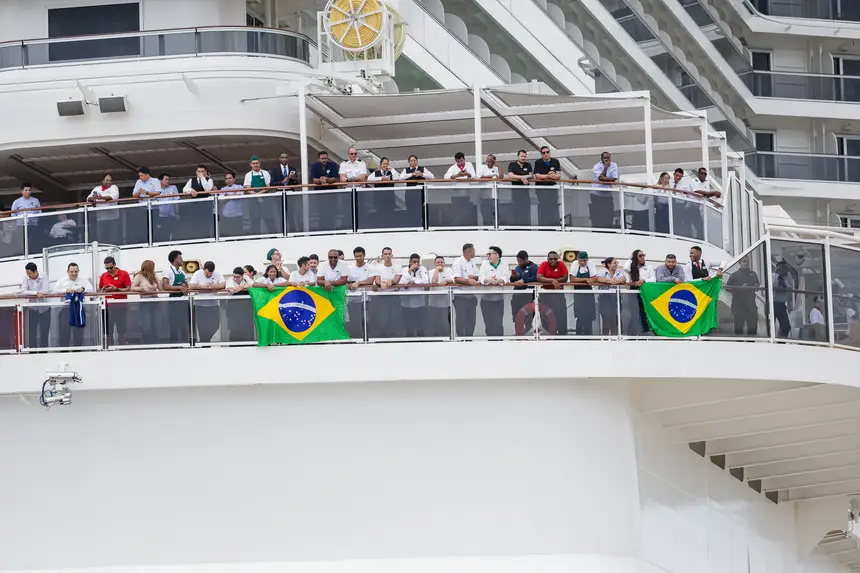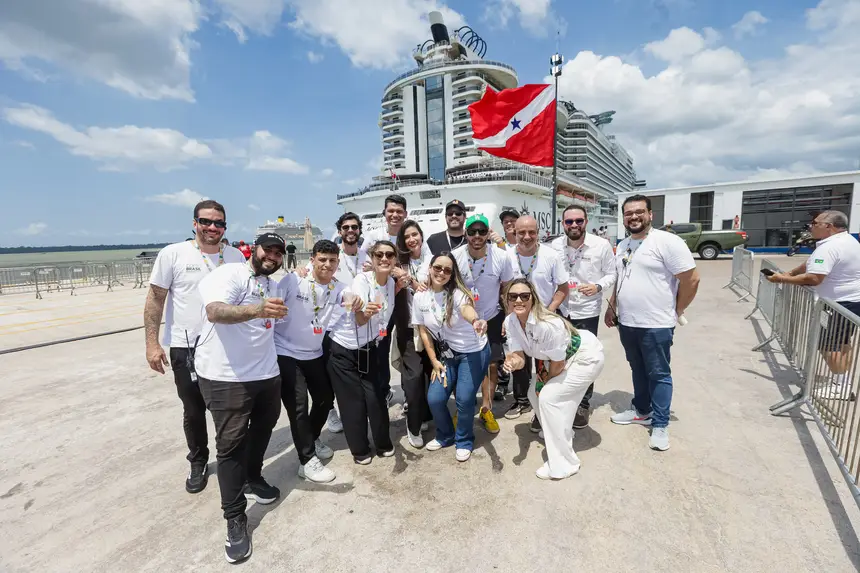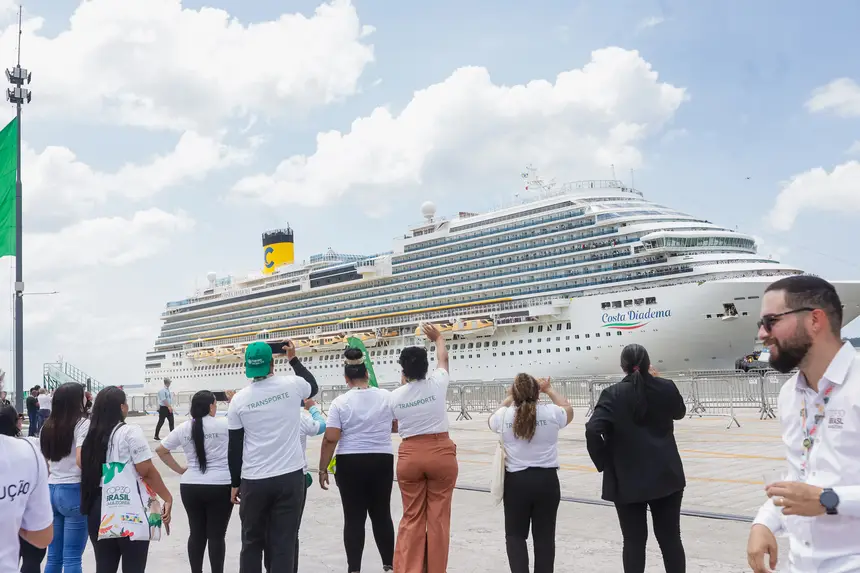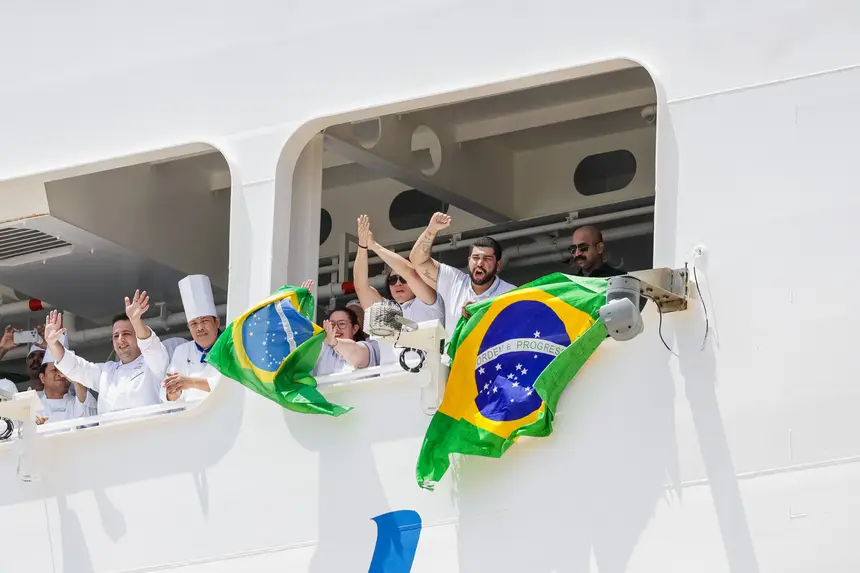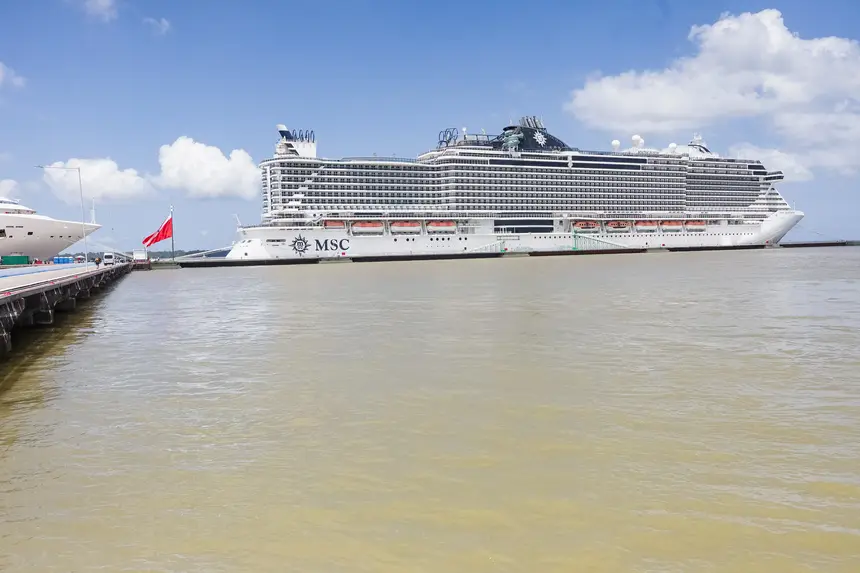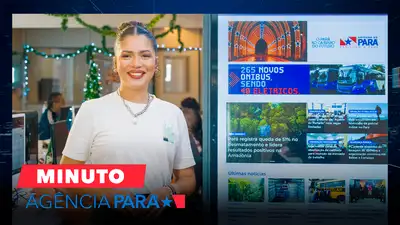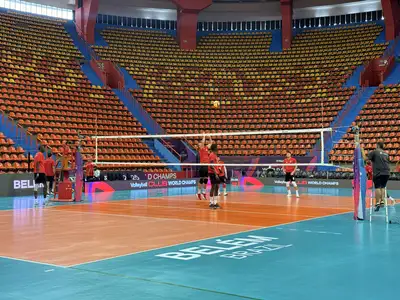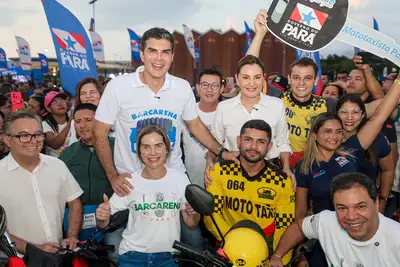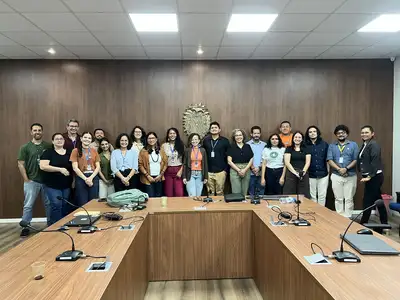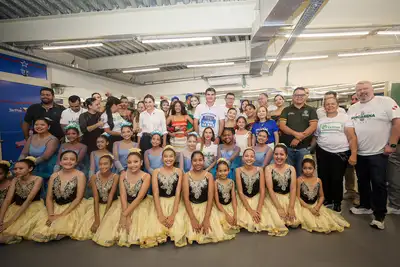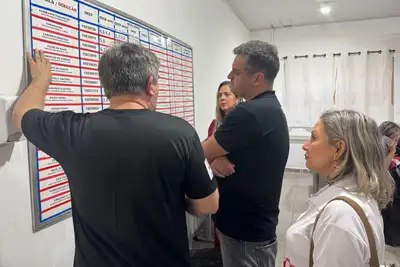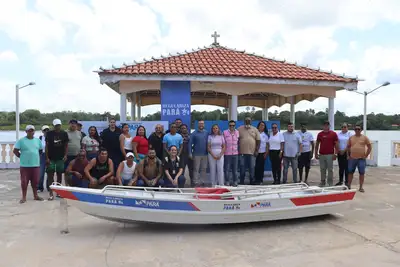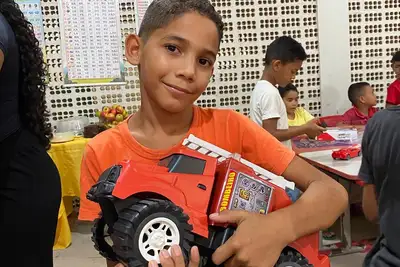Port of Outeiro consolidates as a hub for tourism and logistics after the operation of COP30 ships
Requalification executed by the Port Authority of Pará raises the standard of port infrastructure in the Amazon
The farewell of the two cruise ships that operated as floating hotels during the 30th United Nations Climate Change Conference (COP30) marked, this Saturday (22), a symbolic moment for the future of port infrastructure in the Amazon. With guests singing "Flying to Pará" by Joelma and waving Brazilian flags, the scene reinforced the consolidation of the Port of Outeiro as a new strategic hub for tourism and logistics in the region.
Located in the district of Belém, the port underwent a complete requalification executed by the Port Authority of Pará (CDP) to meet the exceptional demand of the conference and ensure a permanent legacy for cruise tourism. The works modernized and expanded the entire complex, making the dock suitable for receiving large vessels.
The intervention was completed in just six months, in an operation considered highly complex. According to the president of CDP, Jardel Rodrigues da Silva, the delivery overcame logistical and environmental challenges. "It was a challenging project. Due to the time, which was very short, the bureaucracy, and the tide conditions of our bay. But none of these challenges were greater than the will to deliver the project," he emphasized.
The modernized terminal has already received international recognition. "We delivered a terminal that is now considered, by the commanders themselves, the most suitable and the best in Brazil," reinforced the president.
Enhanced security and mobility
The preparation to receive the ships mobilized a strong integrated security and mobility scheme. The Port of Outeiro was classified as one of the safest in the country, with joint action from the Public Security Secretariat, Navy, Army, Civil Police, Military Police, and Port Guard — the latter equipped with advanced technology, including drones with thermal vision.
Legacy and social impact
In addition to expanding the tourism infrastructure, the arrival of the cruise ships generated immediate effects for the local economy. For the project manager of the Extraordinary Secretariat for COP30 (Secop), Gabriela Lima, the legacy definitively boosts the sector in the region. "It is an important legacy that will be left to drive tourism. Minister Celso Sabino (of Tourism) was also here and is working to ensure that these cruise routes continue and promote development in the region," she stated.
The impact was also felt by the Outeiro community. Thaís Akemi Cunha dos Santos, in charge of the teams from the company Trevo Amazônia, highlighted the changes at Praia da Brasília. "The 'giants', as our governor calls the cruise ships, brought greater income to the people, including those from Praia da Brasília, which is now well known."
Jardel Rodrigues emphasized the recognition achieved by Pará. "Brazil discovered Belém and the world discovered a state in the Amazon. We are very happy about this," he celebrated.
Farewell in Pará rhythm
The departure of the Costa Diadema (12:15 PM) and the MSC Seaview (12:35 PM), which together offered six thousand beds distributed in 3,882 cabins, concluded the operation in a celebratory atmosphere, reaffirming the hospitality and cultural identity of Pará. For Gabriela Lima, the experience was "above expectations" and demonstrated the region's potential for future cruise ship operations.
With modernized infrastructure, international standards, and recognition from authorities and commanders, the Port of Outeiro consolidates as a new gateway for international tourism in the Amazon — and as one of the main structural legacies left by COP30 for Pará.


